
Dog aggression medicine is a vital topic for any dog owner who wants to ensure their furry friend lives a happy and healthy life. According to research, aggression in dogs can be caused by a combination of genetic, environmental, and medical factors.
Identifying the underlying cause of aggression is crucial before starting treatment. A veterinarian can help determine if medical issues such as pain, anxiety, or neurological disorders are contributing to the aggression.
Treatment options for dog aggression vary depending on the cause and severity of the issue. Medications such as fluoxetine and clomipramine can be prescribed to help manage anxiety and aggression in dogs.
Preventing dog aggression requires a comprehensive approach that includes training, socialization, and environmental modifications. By understanding the underlying causes of aggression and taking proactive steps, dog owners can reduce the risk of aggression and create a safe and happy home for their pets.
On a similar theme: Does Neutering Help Dog Aggression
What is Reactivity?
Reactivity is a common issue in dogs that can make everyday situations challenging for both the dog and its owner. A reactive dog is one that responds to normal occurrences with abnormal and excessive levels of arousal.
Seeing a stranger on a walk is an everyday occurrence, but for a reactive dog, it can lead to intense barking, lunging, cowering, and pulling on the leash. These behaviors are out of proportion to the situation.
Dogs who are reactive are overcome by their emotions and find it hard to calm down or listen to their owner. It's like they've been set off, and it's all you can do to drag them away.
Reactive dogs often have trouble with loose leash walking and good manners, making everyday activities like walks a nightmare.
For your interest: Leash Aggression Dog Whisperer
Understanding Reactivity
Reactivity in dogs is a complex issue that can lead to aggression if left unaddressed. It involves out-of-proportion emotional arousal, which can cause a dog to behave instinctively rather than think through their actions.
A reactive dog is more likely to behave aggressively, especially if they've learned that it gets results. For example, if they growl at a stranger and the growl is ignored, they may escalate to snapping and biting.
Related reading: Healthy Mind Canine - Separation Anxiety Training
Reactivity is distressing for dogs, and it's essential to prevent it from happening in the first place. Socialization and positive exposure to various situations and people can help control their emotions.
However, if your dog has already developed reactivity, there are no quick fixes. Consistency, participation, and follow-through from the owner are crucial for a successful behavior modification plan.
To manage reactivity, it's essential to practice management, avoiding situations that emotionally arouse your dog. This might mean walking at night when it's quiet or staying away from busy parks.
A three-step program can help reduce reactivity:
- Practice management to prevent your dog from reacting to their triggers.
- Begin a positive-reinforcement training program, including behavior modification protocols like desensitization and counterconditioning.
- Learn to read dog body language to intervene before your dog becomes reactive.
Medication can be a possible fourth step, helping to calm your dog and make them more receptive to learning new behavior patterns.
Causes
Dog aggression is a complex issue with various underlying causes. Rachel Lane, a certified canine behavior consultant, reminds us that reactivity can happen anywhere, on-leash, off-leash, indoors, and outdoors.
A lack of socialization while a puppy can lead to anxiety-based reactivity in dogs. This can cause overwhelming reactions to everyday situations. Dogs that become frustrated when their excitement to greet another dog or a stranger is thwarted by a leash, fence, or other barrier often lack emotional self-control.
Additional reading: Dog Leash Aggression
Previous bad encounters, such as being attacked by another dog, can create fear later in life. This fear can manifest as reactivity, which can put a dog at high risk of acting aggressively. A reactive dog is more likely to behave instinctively with fight, flight, or freeze than to consider their actions.
Reactive dogs can learn that aggression gets results, especially if they growl at a stranger and the growl is ignored. This can lead to escalating behaviors like snapping and biting. It's essential to note that while a dog may currently be performing reactive behaviors, these behaviors can morph into defensive aggression over time.
Here are some common causes of dog aggression:
- Lack of socialization
- Genetics
- Previous negative experiences
- Immediate triggers in the environment
These factors can contribute to various types of dog aggression, including territorial, possessive, predatory, fear or anxiety-related aggression, and more. Understanding these types can help address the underlying causes and promote a safer and more harmonious relationship with your dog.
Dogs may become overly aggressive due to their past experiences, including abuse and neglect. Rescue dogs from dog fighting operations often exhibit inter-dog aggression more frequently. An owner's behavior can also influence a manifestation of aggression, such as punishing a dominant dog for showing aggression towards a weaker dog.
Symptoms and Warning Signs
Dogs communicate their feelings through their behavior, and if we pay attention, we can notice the signs that they're starting to feel uncomfortable or threatened.
A dog's avoidance of eye contact is an early sign that they might be feeling uncomfortable or stressed. Excessive yawning can also be a stress indicator, as dogs often try to calm themselves by repeatedly licking their lips.
Dilated pupils or showing the whites of their eyes can indicate that a dog is scared or threatened. Growling is another warning sign, as it signals to the dog that the stressful situation should stop.
Here are some common warning signs of canine aggression to be aware of:
- Avoiding eye contact
- Excessive yawning
- Lip licking
- Dilated pupils or showing whites of eyes
- Growling
- Intense staring
- Aggressive barking
- Snarling
- Lunging
- Snapping
- Biting
Symptoms and Types
Symptoms of aggression in dogs can be subtle, but knowing what to look for is crucial in preventing incidents. Growling, biting, lip lifting, snapping, and lunging toward another dog are all common symptoms of inter-dog aggression.
These behaviors can be accompanied by fearful or submissive body postures, such as crouching, tucking the tail under, licking the lips, and backing away. I've seen dogs exhibit these behaviors when they feel threatened or scared.
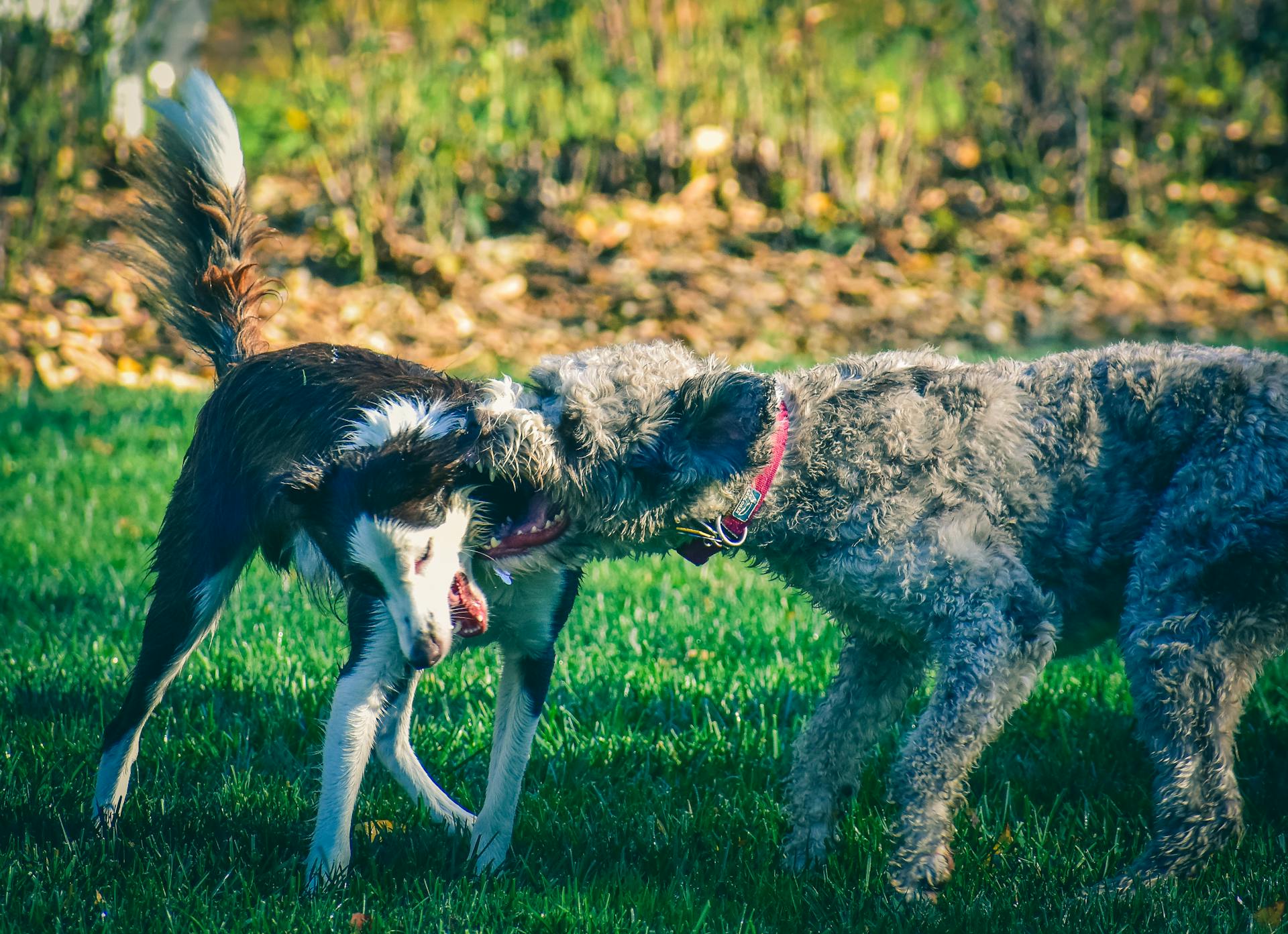
A specific condition can sometimes trigger aggression in dogs, even if they normally get along well. It's essential to pay attention to these triggers to prevent incidents.
Here are some common types of dog aggression:
These types of aggression can be caused by various factors, including fear, anxiety, and medical conditions. Understanding the underlying causes of aggression is key to addressing the issue and promoting a harmonious relationship with your dog.
Symptoms and Warning Signs
Dogs communicate their feelings through behavior, and paying attention to these signs can help prevent aggression.
Avoiding eye contact is an early sign that a dog might be feeling uncomfortable or stressed. Excessive yawning can also be a stress indicator, while lip licking is a self-soothing behavior.
Dilated pupils or showing the whites of their eyes can indicate fear, while growling is a warning sign that a dog feels threatened. Intense staring, particularly with a stiff posture, can also be a sign of aggression.
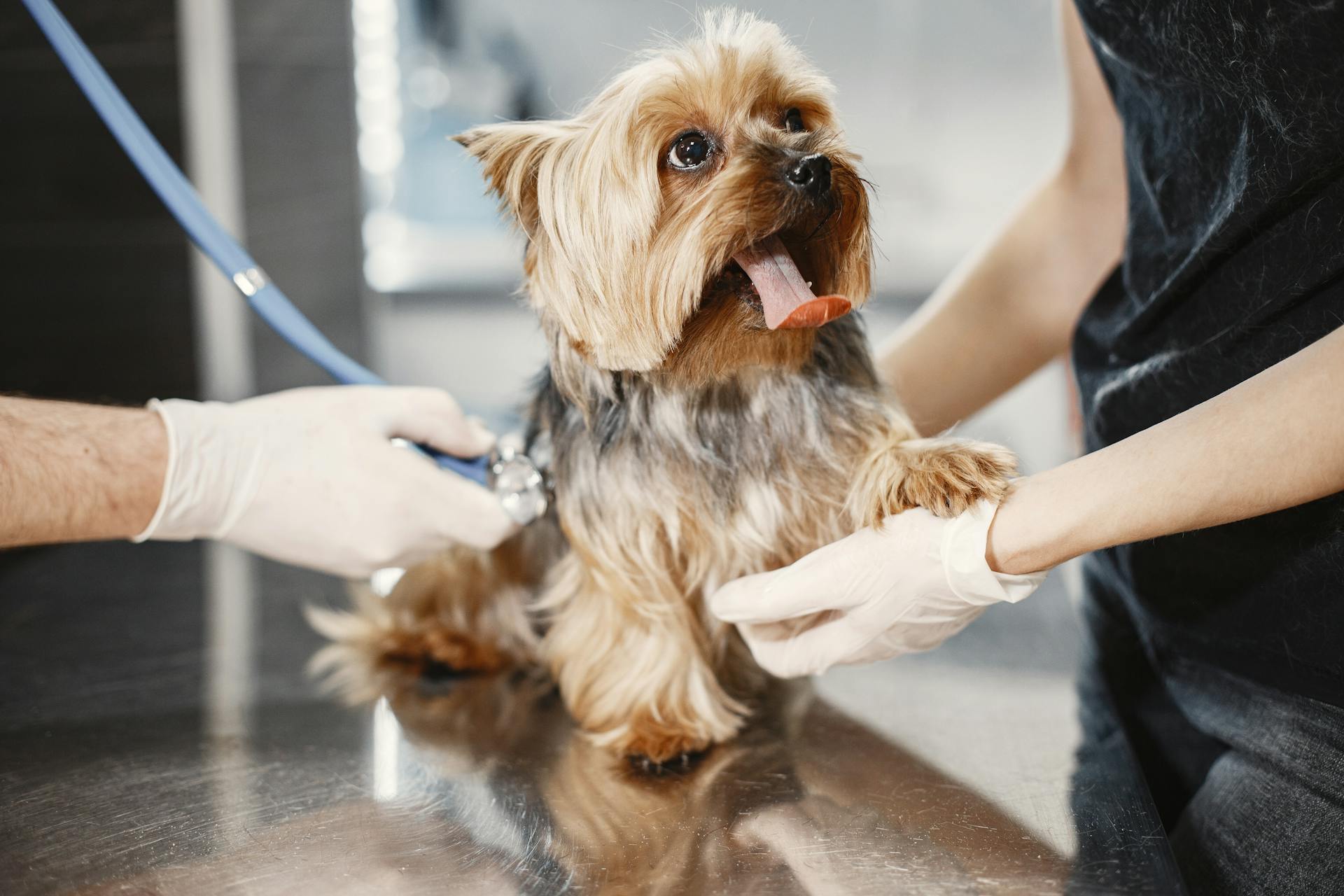
Aggressive barking sounds deeper and more forceful than regular barking, while snarling is a combination of growling and showing teeth. Lunging and snapping are also signs of extreme threat, and biting is the most severe sign of aggression.
Here are some common warning signs of canine aggression:
- Avoiding eye contact
- Excessive yawning
- Lip licking
- Dilated pupils or showing whites of eyes
- Growling
- Intense staring
- Aggressive barking
- Snarling
- Lunging
- Snapping
- Biting
Clinical Follow-Up/Monitoring
Regular follow-up with a veterinary behaviorist, trainer, or behavior consultant is crucial to assess the effectiveness of treatment. This should be done at least every 4 weeks.
Recheck examinations should evaluate improvement in the intensity of the behavior, frequency of the behavior, and recovery period after being triggered. A decrease in all these areas should be seen after treatment.
In severe cases, improvement may only be seen in intensity and recovery, with frequency only decreased with strict management. Adjustments to the treatment plan should be made if a 50% improvement is not seen at each recheck.
For more insights, see: Treatment for Dog Aggression
History and Clinical Signs
Taking a thorough behavior history is essential when dealing with aggression, and a modified version of the SOCRATES Mnemonic for Pain Assessment can be used to assess a history of aggression.
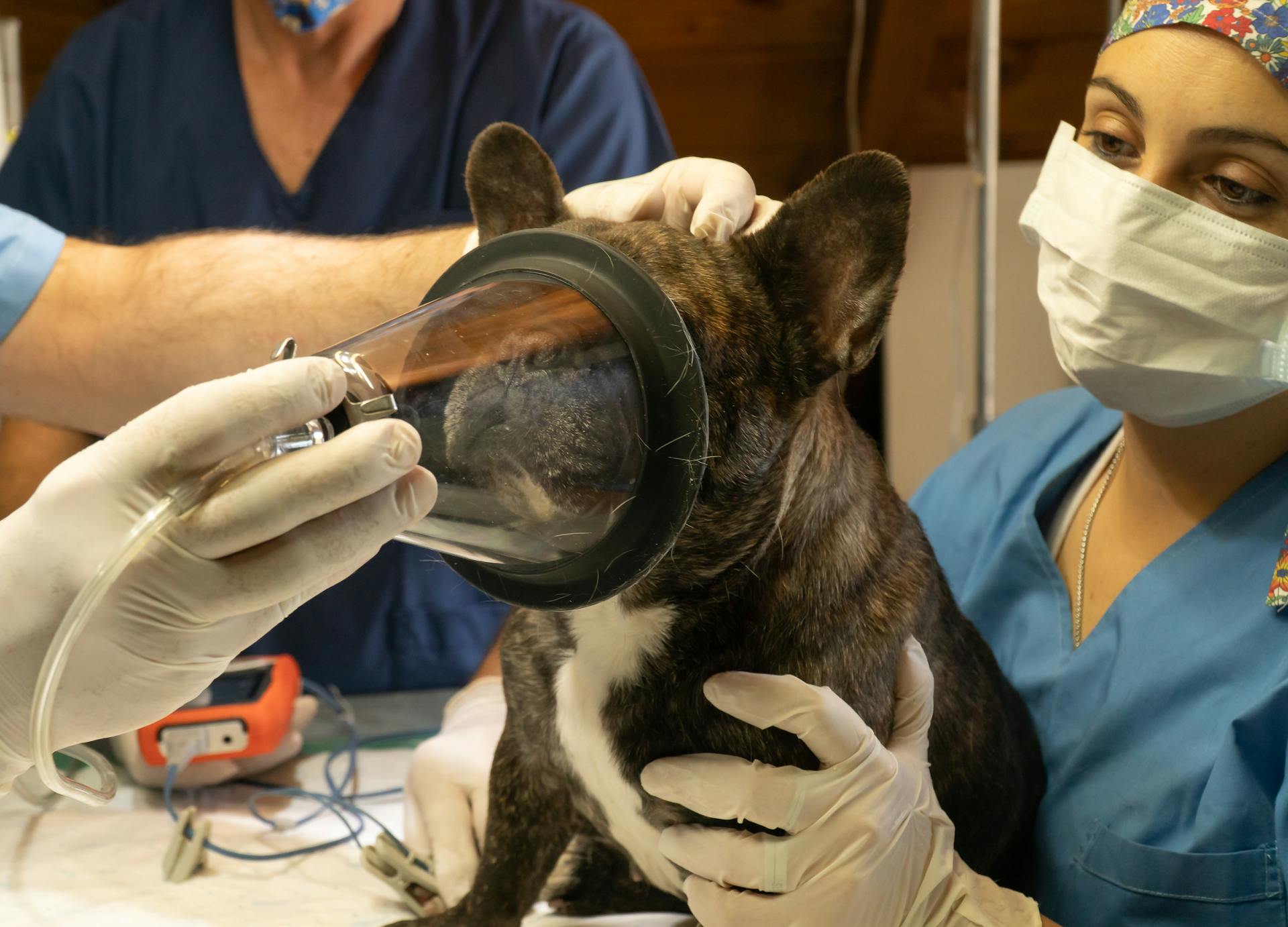
A primary clinical disorder that could contribute to or cause aggression should be ruled out, as increased patient irritability can lead to or increase the likelihood of behavior disorders.
A physical examination, including an orthopedic and neurologic evaluation, should be performed to identify any underlying medical conditions that may be contributing to the aggression.
A complete blood count (CBC), serum chemistry profile, and urinalysis should also be conducted to rule out any underlying medical conditions.
Further testing, such as imaging or endocrine testing, may be necessary based on the initial diagnostic results.
After clinical disorders have been ruled out or treated, a comprehensive treatment plan can be developed to address the behavior disorder.
Recommended read: Can Dogs Have an Eating Disorder
Treatment and Prevention
Improvement in aggression can take weeks to months, with 96% of cases showing improvement, and a median improvement of 69% with proper management.
Avoiding aggressive situations and triggers is crucial in treatment, and spaying or neutering intact dogs may also help reduce aggression.
Desensitization and counter-conditioning, along with medication like fluoxetine to reduce anxiety and aggression, are effective techniques in managing aggression.
Consistency is key, and every household member must be on the same page to ensure successful treatment.
Here are some key factors to consider in managing aggression:
Early socialization and consistent, positive reinforcement-based training from puppyhood can help prevent many cases of aggression.
Treatment
Treatment takes time and effort, and it may take weeks to months before improvement is seen. Improvement is seen in 96% of cases, with a median improvement in aggression rated at 69%.
Avoiding aggressive situations and triggers is crucial in treatment. Consistency is key, so every human member of the household must be on the same page.
Desensitization and counter-conditioning are effective techniques in treating aggression. Punishment should be avoided as it may escalate the aggression or redirect it toward the owner.
Medication, such as fluoxetine, can help reduce anxiety and aggression, but it's not a standalone solution. Some form of behavior modification is very important to success.
Take a look at this: Heartworm Treatment Make
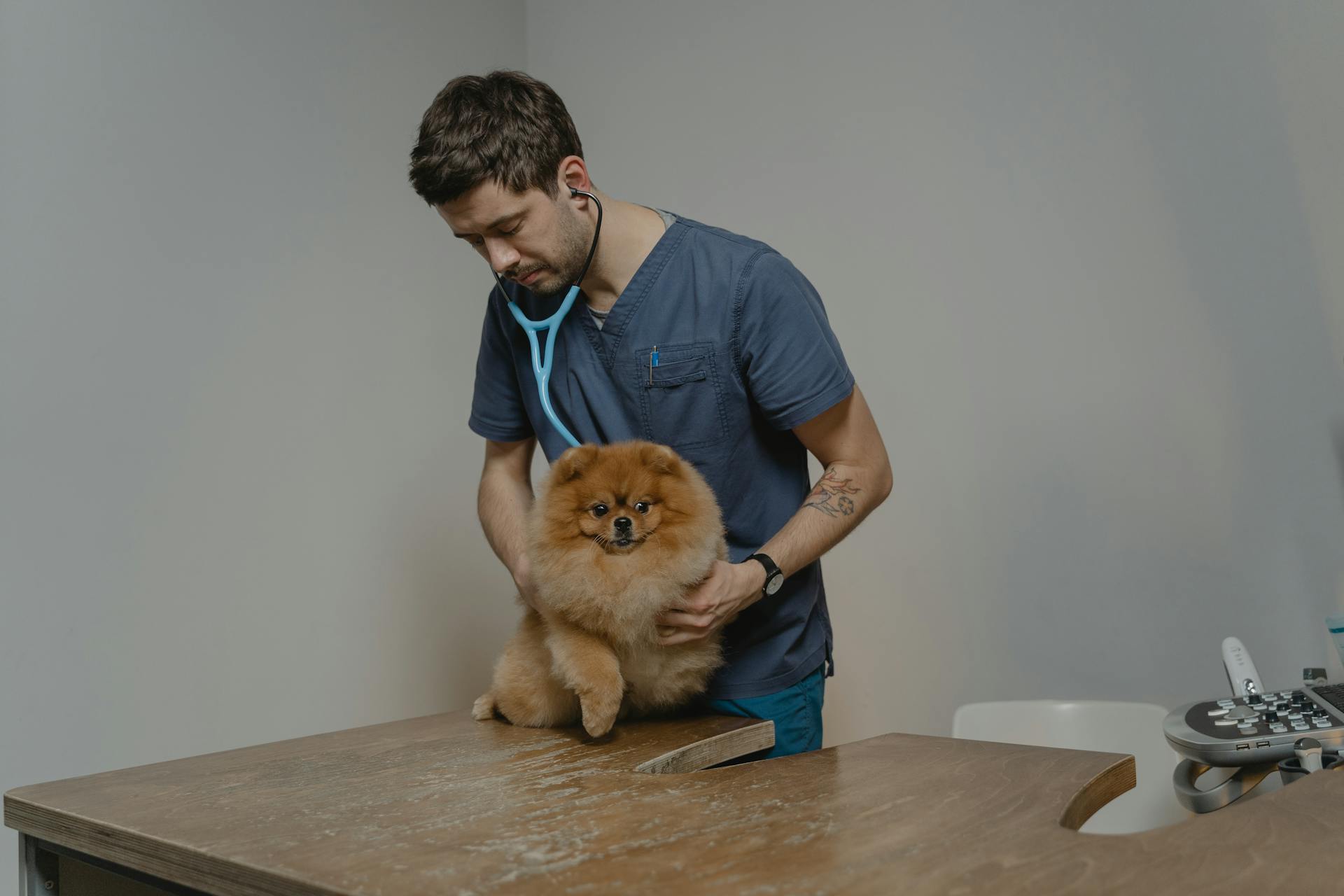
Spaying and neutering of intact dogs may also help reduce aggression. Exercise can have a calming effect, so taking the dogs for walks or runs may be recommended.
A comprehensive evaluation of the dog's history, behaviors, and triggers is necessary for effective treatment. A physical exam and diagnostics by a veterinarian or dog behaviorist can help understand the root cause of aggression.
Behavioral training, teaching the dog to respond differently to triggers and rewarding calm behavior, is a key component of treatment. Creating a stress-free environment or a safe space can make the dog more at ease.
Medications can help manage underlying issues like anxiety, but consistent effort and patience are necessary for success. Most dogs can learn to manage their aggression with time and the right strategies.
For more insights, see: Skin Care for Dogs with Allergies
Prognosis and Prevention
Prognosis for dogs with aggression depends on the owner's ability to identify triggers, manage them, and recognize early warning signs.
Early socialization is critical to prevent aggression toward other dogs. Puppies should be socialized in a safe, controlled environment between 3 to 14 weeks of age.

Understanding your dog's breed is essential before adopting them, as some breeds may not fit well with your home environment and lifestyle.
Creating a calm and secure environment is crucial to prevent aggression. Be mindful of potential triggers and avoid them whenever possible.
Risk factors that should be considered when dealing with dog aggression include the family's ability to manage the dog, severity of bites, and predictability of the aggression.
Here are some key risk factors to consider:
- The family’s ability to manage the dog during treatment
- Severity of bites
- Number of bite incidents
- Members of the household (particularly those who are children, elderly, or cognitively impaired)
- Predictability of the aggression
- Size of the dog
- Context of the aggression
- Concurrent medical disease
Setting realistic expectations is important so the owner can determine if they are capable of continuing treatment and assess the possibility of rehoming the dog.
Aggression and Medical Conditions
Aggression can sometimes be a sign of an underlying medical condition in dogs. In some cases, a dog's aggression may be caused by a medical issue such as otitis externa, a fungal infection of the ear that can cause pain and discomfort.
Dwight D. Eisenschnauzer, a 2-year-old giant schnauzer, exhibited canine-directed aggression due to recurring otitis externa, resource guarding his toys, owner, food, and resting spots from another dog in the house.
Early recognition of aggression and signs of otitis externa, such as head shaking and ear scratching, is crucial in treating the condition.
Aggression and Medical Conditions
Some medical conditions can cause aggression in dogs. Otitis externa, an infection of the outer ear, can lead to resource guarding and aggression towards other dogs. This was the case with a 2-year-old giant schnauzer named Ike, who exhibited aggression when experiencing a recurrence of otitis externa.
In cases like Ike's, it's essential to recognize the signs of otitis externa, such as head shaking and ear scratching, and provide medical treatment. Managing resources and increasing time of separation between dogs can also help reduce aggression.
Medications like pheromones and nutraceuticals may be used to decrease fear, anxiety, and stress, but they should be used cautiously due to the risk of bite disinhibition. Common medications used to treat aggression include selective serotonin reuptake inhibitors, tricyclic antidepressants, and α2 agonists.
Here are some common medical conditions that can cause aggression in dogs:
- Otitis externa (infection of the outer ear)
- Hormone disorders (e.g., arthritis)
- Painful conditions (e.g., arthritis)
It's crucial to rule out physical problems that may contribute to aggression and evaluate the overall safety of the situation before starting treatment. If severe bites have occurred, aggression triggers are unpredictable, or the home situation is difficult to treat, re-homing may be recommended.
Genetic Predisposition
Genetic predisposition can be a deep-rooted factor in a dog's aggressive behavior, especially if their parents displayed aggression or if they belong to a protective breed.
Some breeds are naturally more protective of their family and territory, which can sometimes manifest as aggression towards strangers or other animals.
Research suggests that if a dog's parents exhibited aggressive behavior, their offspring may be more likely to develop similar traits.
In fact, studies have shown that certain breeds, such as those bred for guarding or fighting, are more prone to aggression due to their genetic makeup.
Explore further: Breeds of Dogs with Rear Dew Claws
Human-Directed
Human-Directed Aggression is a serious concern for many dog owners. Spayed dogs are less likely to show aggression toward humans.
Dogs that attend puppy training classes have a decreased risk of aggression toward unfamiliar humans. However, punitive methods of training can actually increase the possibility of aggression.
Working dogs and hounds have a higher risk of aggression toward familiar humans. Gun dogs, on the other hand, have a decreased risk of aggression toward unfamiliar humans.
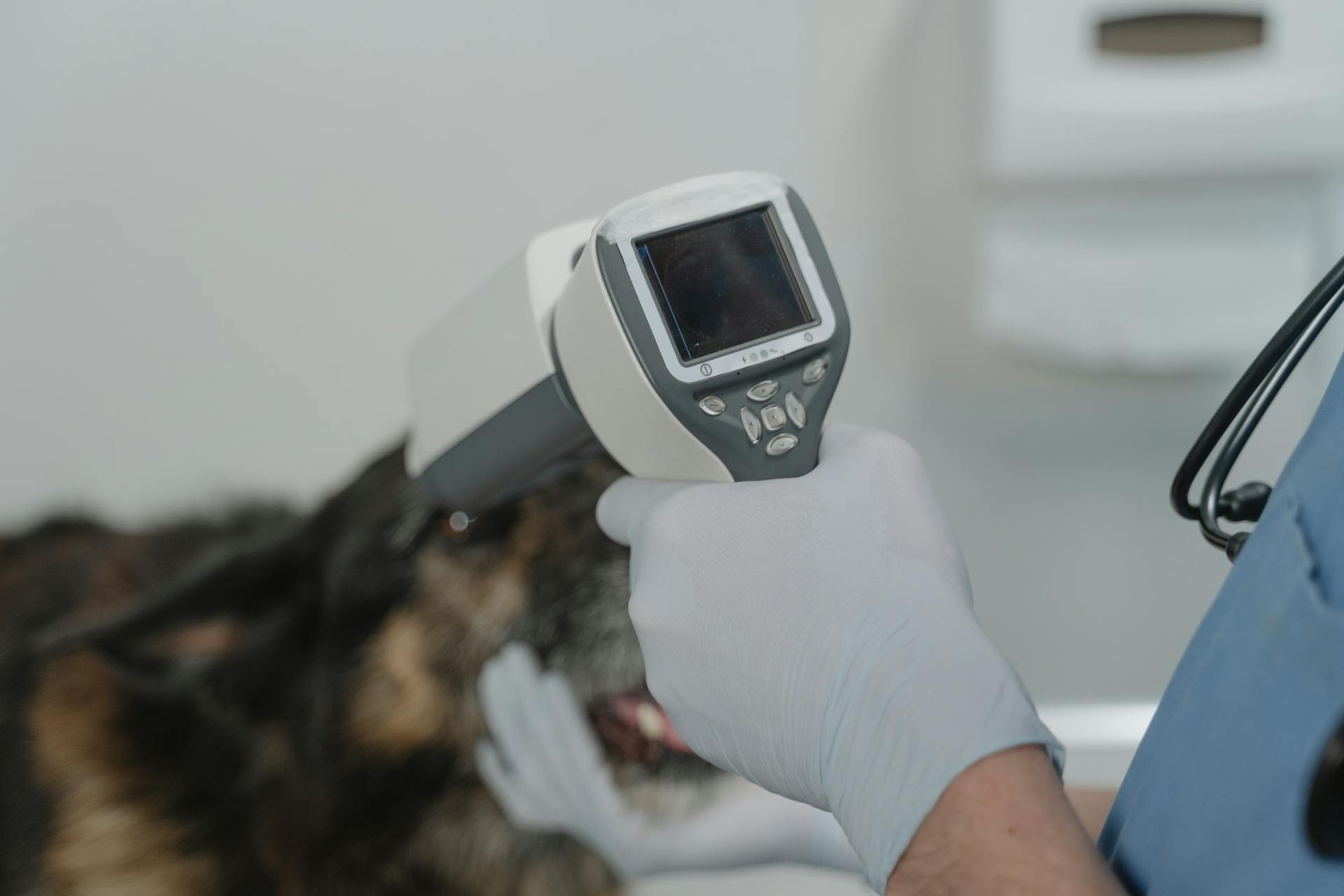
A dog's history and experiences are more important than breed characteristics in determining aggression. So, even if you know a dog's breed, it's essential to consider its individual history and experiences.
Here are some common signs of human-directed aggression:
- Barking
- Snarling
- Growling
- Lunging
- Snapping
- Nipping
- Biting
A dog's body position and posture can help determine whether aggression is offensive or defensive in nature.
If your dog is aggressive, it's crucial to consider the following:
- Does the dog bite once and then retreat, or does it continue to bite and hold until removed from the target?
- Does the dog separate itself or is owner intervention necessary?
- Does aggression extend to other circumstances, such as other dogs or situations?
- Does aggression continue after the trigger or stimulus has been removed?
Understanding the pattern of your dog's aggression can help you develop an effective treatment plan.
Sources
- https://www.akc.org/expert-advice/training/reactivity-vs-aggression/
- https://www.tlcvetelpaso.com/blog/1010-aggression-between-family-dogs
- https://bettervet.com/resources/pet-behavior/aggression-in-dogs
- https://www.cliniciansbrief.com/article/canine-aggression-toward-other-dogs-humans
- https://www.petmd.com/dog/conditions/behavioral/c_dg_AggressionInterdog
Featured Images: pexels.com


